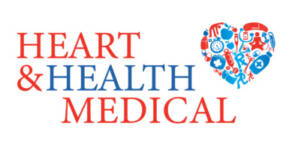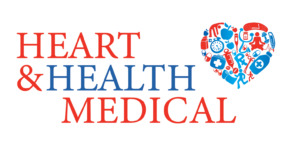Atrial Septal Defect
Atrial septal defect (ASD) is a congenital heart defect in which the wall that separates the upper heart chambers (atria) does not close completely. Congenital means the defect is present at birth.
Signs and Symptoms
Small to moderate-sized defects may produce no symptoms, or not until middle age or later. Symptoms that may occur can include:
- Difficulty breathing (dyspnea)
- Frequent respiratory infections in children
- A sensation of feeling the heartbeat (palpitations) in adults
- Shortness of breath with activity

Causes of Atrial Septal Defect
In fetal circulation, there is normally an opening between the two atria (the upper chambers of the heart) to allow blood to bypass the lungs. This opening usually closes around the time the baby is born.
If the ASD is persistent, blood continues to flow from the left to the right atria. This is called a shunt. If too much blood moves to the right side of the heart, pressures in the lungs build up. The shunt can be reversed so that blood flows from right to left. Many problems can occur if the shunt is large, but small atrial septal defects often cause very few issues and maybe found much later in life.
ASD is not very common. When the person has no other congenital disability, symptoms may be absent, particularly in children. Symptoms may begin any time after birth through childhood. Individuals with ASD are at an increased risk for developing several complications, including:
- Atrial fibrillation (in adults)
- Heart failure
- Pulmonary over circulation
- Pulmonary hypertension
- Stroke
Diagnosis - Exams and Tests
The doctor may hear abnormal heart sounds when listening to the chest with a stethoscope. A murmur may be heard only in certain body positions, and sometimes a murmur may not be heard at all. The physical exam may also reveal signs of heart failure in some adults.
If the shunt is large, increased blood flow across the tricuspid valve may create an additional murmur when the heart relaxes between beats.
Tests that may be done include:
- Cardiac catheterization
- Chest x-ray
- Coronary angiography (for patients over 35 years old)
- Doppler study of the heart
- ECG
- Echocardiography
- Heart MRI
- Transesophageal echocardiography (TEE)
Treatment of Atrial Septal Defect
ASD may not require treatment if there are few or no symptoms, or if the defect is small. Surgical closure of the defect is recommended if the defect is large, the heart is swollen, or symptoms occur.
A procedure has been developed to close the defect without surgery. The procedure involves placing an ASD closure device into the heart through tubes called catheters. The health care provider makes a tiny surgical cut in the groin, then inserts the catheters into a blood vessel and up into the heart. The closure device is then placed across the ASD and the defect is closed.
Not all patients with atrial septal defects can have this procedure.
Prophylactic (preventive) antibiotics should be given prior to dental procedures to reduce the risk of developing infective endocarditis immediately after surgery for the ASD, but they are not required later on.

Outlook (Prognosis)
With a small to moderate atrial septal defect, a person may live a normal life span without symptoms. Larger defects may cause disability by middle age because of increased blood flow and shunting of blood back into the pulmonary circulation.
Atrial Septal Defect Prevention
There is no known way to prevent the defect, but some of the complications can be prevented with early detection.

